
The post These are the Most Commonly Spotted Animals at Redwood National Park appeared first on A-Z Animals.
Nature lovers flock to Redwood National and State Park in California for the park’s most famous feature, the ancient coastal redwood forest. Home to towering trees whose ancestors lived more than 160 million years ago, the park also offers visitors the opportunity to explore 131,000 acres of coastal mountains, prairies, and coastline. These areas are teeming with 66 documented land mammal species and many different types of birds, fish, and marine life. This diverse ecology has earned the park a designation as a UNESCO World Heritage Site. Take a look at some of the wildlife you can spot in the park and adjoining coastal waters.
Bobcat (Lynx rufus)

Bobcats often hide in rock crevices to avoid predators.
©Wirestock Creators/Shutterstock.com
Bobcats are among the smallest wild cats, typically weighing between 11 and 30 pounds and standing about two feet tall. They’re solitary animals and are most likely spotted at dawn, dusk, and during the night. They tend to live along the borders where forest meets open land, which gives them cover from predators and proximity to their prey. During the day, they usually rest in dense brush, rock crevices, or hollow logs to avoid predators and human interactions.
Mountain Lion (Puma concolor)

Mountain lions are shy, solitary big cats that prefer to avoid human interaction.
©Vaclav Sebek/Shutterstock.com
Mountain lions go by many different names, including cougar, puma, and panther. The ones you see in the park are tan or grayish-brown with a light underbelly and thick, muscular tail. They are large apex predators, weighing between 120-220 pounds. They’re most active at dawn, dusk, and night. Mountain lions are stealthy ambush predators, hunting elk, deer, rabbits, and other small mammals. Their muscular hind legs make them excellent jumpers, reaching distances of up to 45 feet.
Coyote (Canis latrans)

Coyote populations are abundant in the park.
©karlumbriaco/iStock via Getty Images
Coyotes are highly adaptable to many living environments, including grasslands, mountains, forests, and even urban settings. They are typically 24-35 inches tall and weigh between 18 and 44 pounds. They hunt at night and sometimes travel in packs, although most often you’ll see one alone or only with its mate. Coyotes are some of the most vocal park residents, using a variety of barks, yips, and howls that can be heard for miles, especially in the quiet overnight hours.
Gray Fox (Urocyon cinereoargenteus)
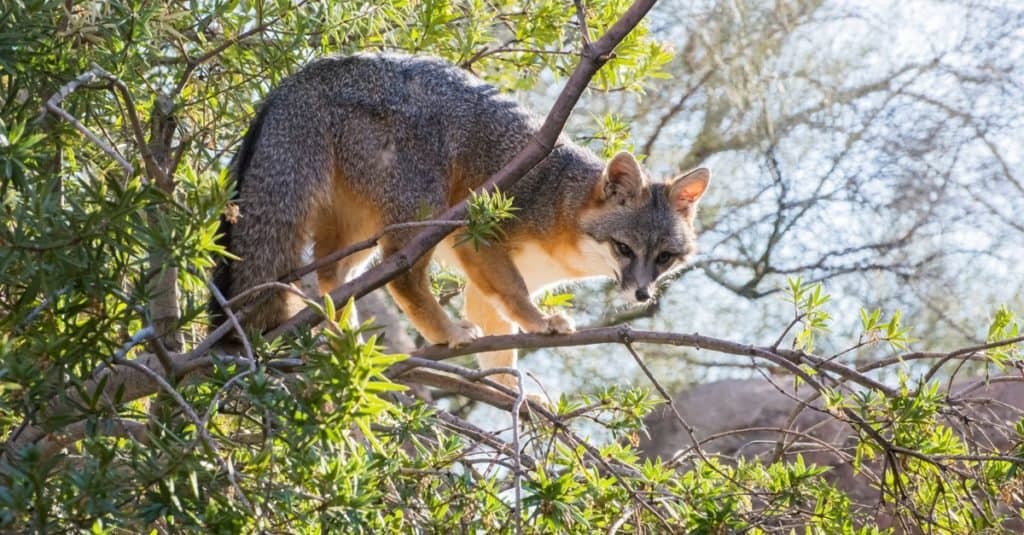
Gray foxes are excellent tree climbers.
©Evelyn D. Harrison/Shutterstock.com
The gray fox is unmistakable due to the black stripe running along the middle of its tail. Small and agile, gray foxes have rotating wrists and semi-retractable claws that help them climb trees. In fact, they’re one of only two canid species that can climb. This ability helps them evade predators like coyotes and also provides a secure spot to build a den and raise their young. Most active at dusk and dawn, you’ll often see gray foxes roaming in wooded areas and along the banks of rivers and streams.
Roosevelt Elk (Cervus canadensis roosevelti)
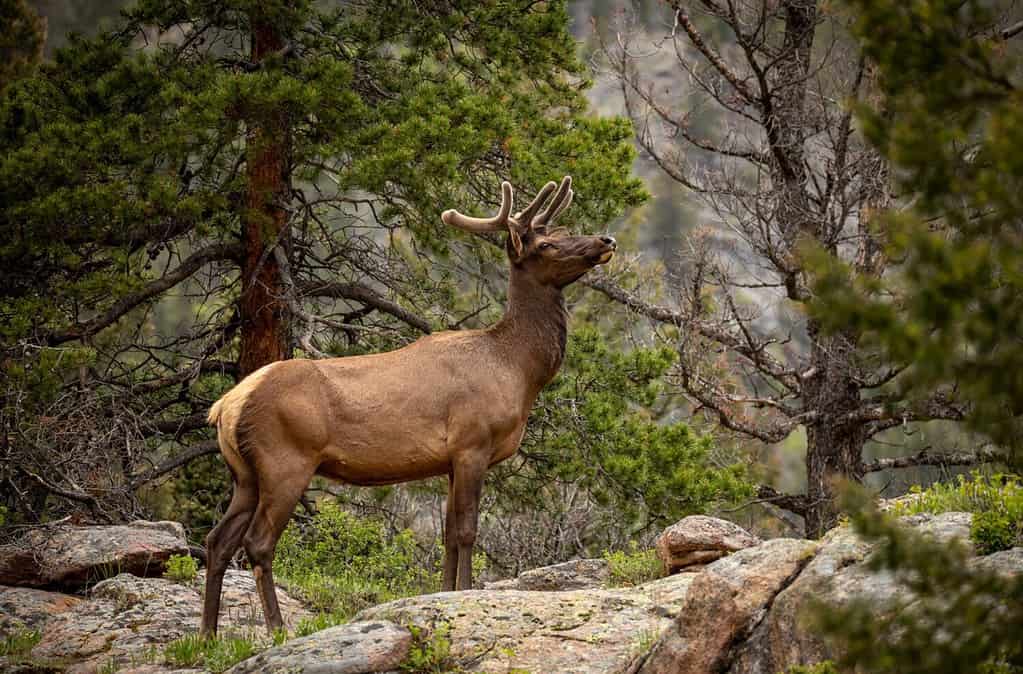
The majestic Roosevelt Elk is usually found in dense forests and grassland areas of the park.
©DanaForeman/Shutterstock.com
The Roosevelt Elk is the largest elk subspecies in North America, weighing in at an impressive 700 to 1,200 pounds and standing nearly six feet tall. Named after President Theodore Roosevelt in honor of his conservation efforts, these elk feed on grasses, berries, and other low-lying plants. They also enjoy woody plants and seedlings. You’ll most likely find Roosevelt elk in forested areas and open prairies of the park.
Black Bear (Ursus americanus)

Black bears are found throughout the park and generally travel alone, unless it is a mother with cubs.
©Wirestock Creators/Shutterstock.com
Black bears thrive on a diet of berries, plants, nuts, insects, and small mammals. They won’t turn down human food, though, if they can access it. They’re especially fond of garbage and campsite food. Male black bears can weigh up to 550 pounds, with females weighing up to 375. When they stand on their hind legs, they can be up to seven feet tall. While they generally try to avoid human contact, mother black bears with cubs can be defensive. Always give bears a wide berth when you encounter them.
Fisher (Pekania pennanti)
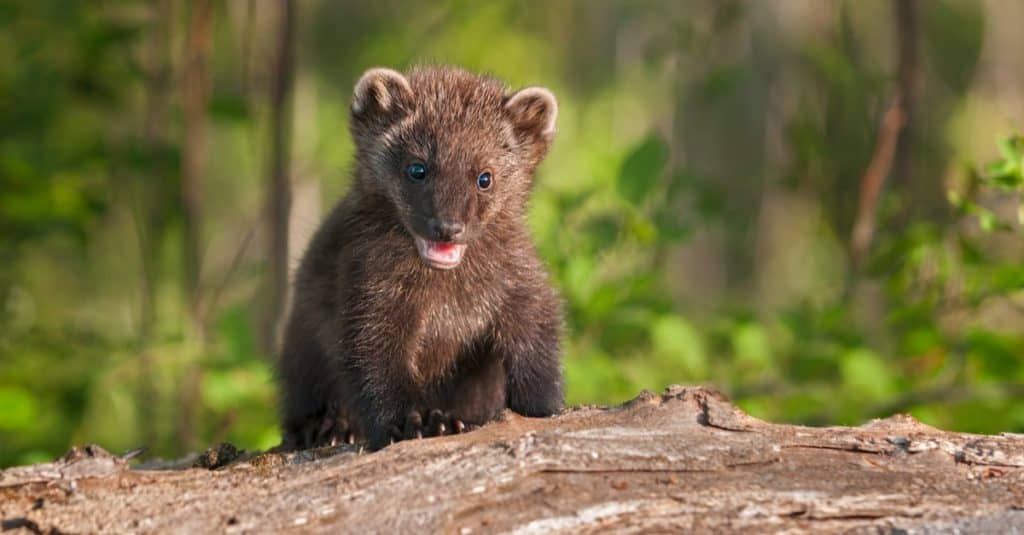
Is it a miniature bear? A weasel? No, it’s a Fisher, one of the more elusive forest dwellers in the park.
©Holly Kuchera/Shutterstock.com
Fishers, with long bodies covered in thick fur, nearly went extinct due to hunting and habitat loss. Today, the Northern California fisher population is not listed as endangered, though it remains vulnerable to ongoing threats. These small mammals, weighing less than 20 pounds, are extremely agile. Fishers can rotate their ankles 180 degrees, which is ideal for scaling the towering redwoods they prefer to call home. They’re also effective hunters, especially adept at preying on porcupines.
Mink (Neogale vison)
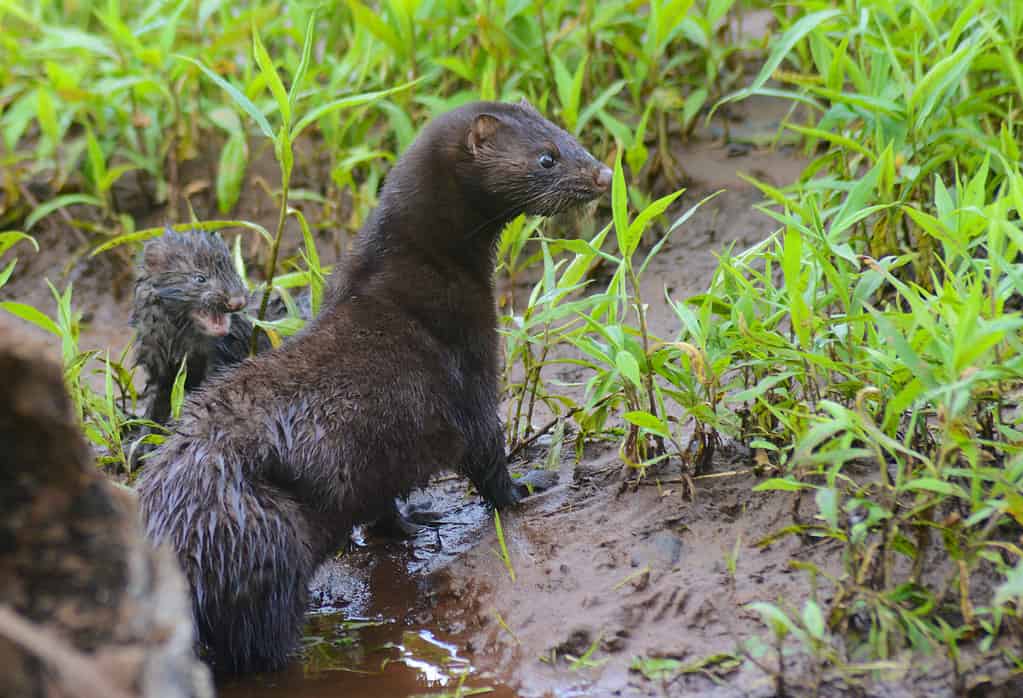
Mink love the water and are often spotted along riverbanks and shorelines in the park.
©Betty4240/iStock via Getty Images
Look closely at the river and stream banks meandering through the park, and you’ll likely spot a mink. These semi-aquatic mammals feast on the frogs, salamanders, crayfish, and aquatic birds that thrive in that habitat. Mink are great swimmers and even better divers. They spend most of their time exploring deep water and the crevices and nooks along the shoreline in search of prey. They are nocturnal and start getting active around dusk.
River Otter (Lontra canadensis)
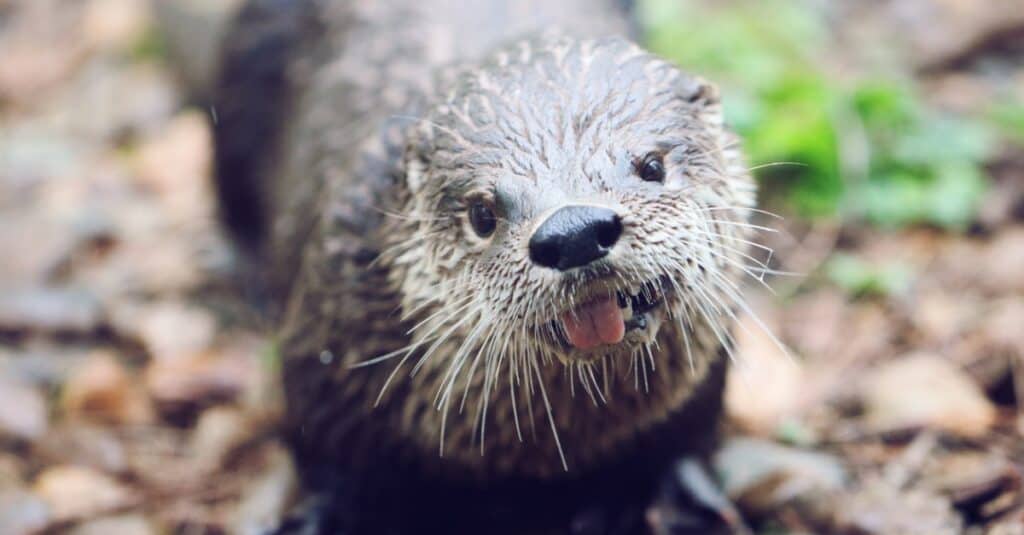
Playful river otters often socialize in groups and are often spotted at the water’s edge.
©iStock.com/Heather Burditt
With webbed feet, non-retractable claws, and a long, muscular tail, river otters are exceptional swimmers that can hold their breath for up to eight minutes. Their favorite meal is fish, which they catch with ease. Constantly on the move both day and night, you’ll usually see them socializing in groups. Their playful and curious nature makes them fun to observe, but do so from a safe distance. Despite their cute appearance, they have a bite as powerful as a German shepherd’s.
North American Beaver (Castor canadensis)
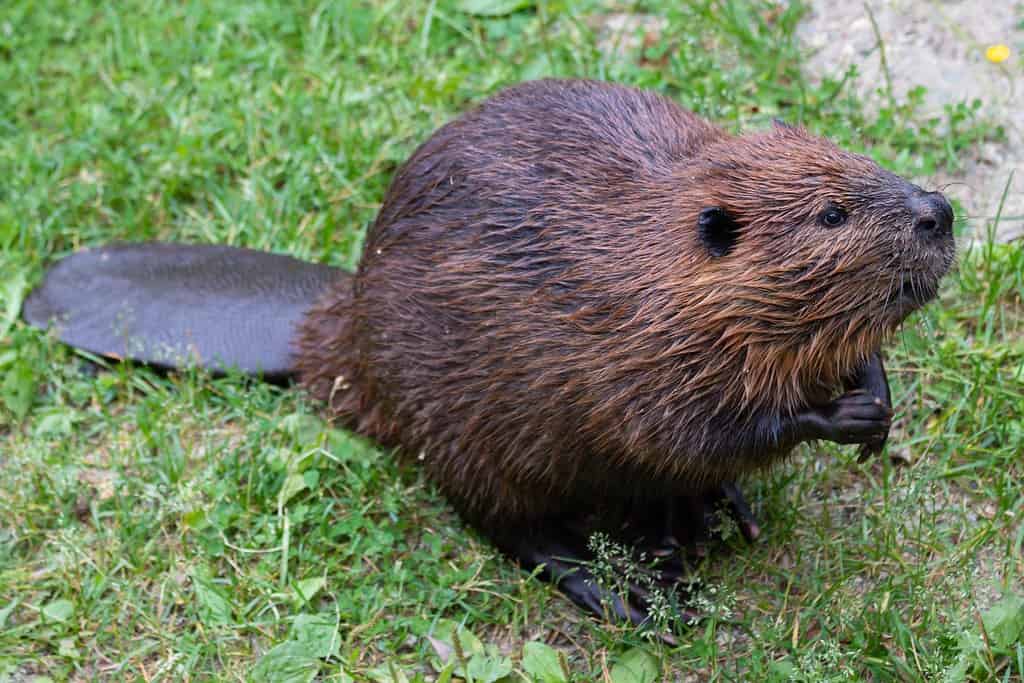
Look for dams in rivers and streams in the park, and you’ll likely spot a beaver nearby.
©Ilkka Koivula/Shutterstock.com
Sturdy and industrious, the North American beaver is the largest rodent in the U.S. Fully grown, it is between two and three feet long, not counting its flat, black tail. Its fur is waterproof, and webbed feet help beavers glide effortlessly through the water. Beavers also have a translucent third eyelid that aids in underwater navigation. Most famous for building dams, beavers do so for practical reasons. Their teeth grow continuously throughout their lives, and gnawing on tree trunks keeps their teeth short.
Harbor Seal (Phoca vitulina)

The harbor seal’s distinctive v-shaped nostrils help you distinguish it from other seal species.
©jindrich_pavelka/Shutterstock.com
Head down to the coastal area of the park and you’ll likely see harbor seals lounging on rocky areas along the shoreline. One of two seal species most often spotted in the park, harbor seals weigh between 220 and 265 pounds. They dine on shellfish, crustaceans, and fish like codfish, herring, and hake. Harbor seals can dive to depths of 1,400 feet and stay underwater for up to 30 minutes. The best time to spot harbor seal pups on the park’s coast is during birthing season, between April and May.
Northern Elephant Seal (Mirounga angustirostris)
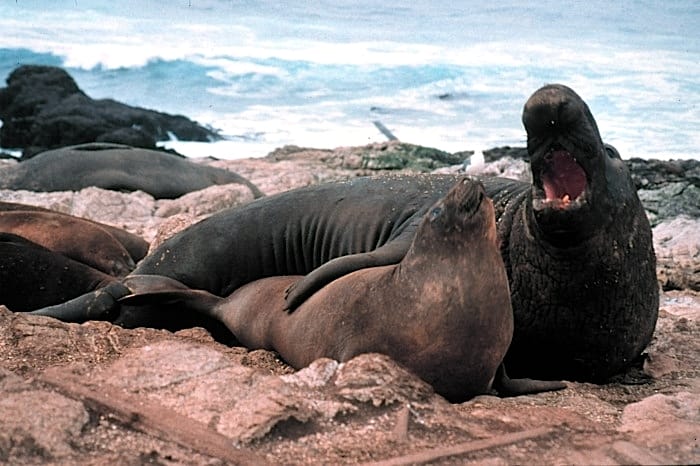
Northern elephant seal are recognizable for their size and noisy demeanor.
©Jan Roletto – Public Domain
Unmistakable due to its sheer size and loud roaring calls, the northern elephant seal is the largest in the Northern Hemisphere. They spend most of their time at sea, coming ashore only to molt, breed, and give birth. When they do come ashore, you’re most likely to spot them on the sandy stretches of beach along the park’s coastline. Hunted nearly to extinction in the early 1900s, the northern elephant seal population has made a comeback. The majority of these seals are found in California’s coastal waters.
California Sea Lion (Zalophus californianus)
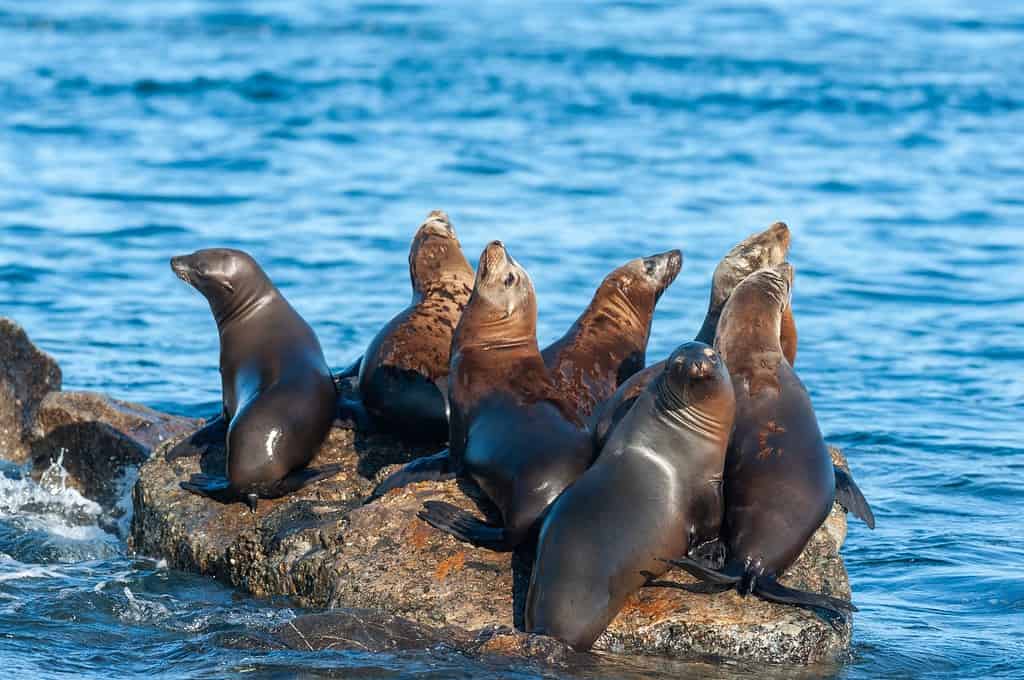
California sea lions have ear flaps that help you distinguish them from seals.
©Goldilock Project/Shutterstock.com
One of two sea lion species found in the park, California sea lions are most recognizable by their nearly incessant vocalizations, including the distinctive bark. You’ll often hear them before you spot them gathered in groups on rocky outcroppings along the park’s coastline. They’re also larger than their seal counterparts. A full-grown male California sea lion can weigh more than 1,100 pounds. Despite their size, California sea lions are fast swimmers and can reach speeds of up to 25 miles per hour.
Steller Sea Lion (Eumetopias jubatus)
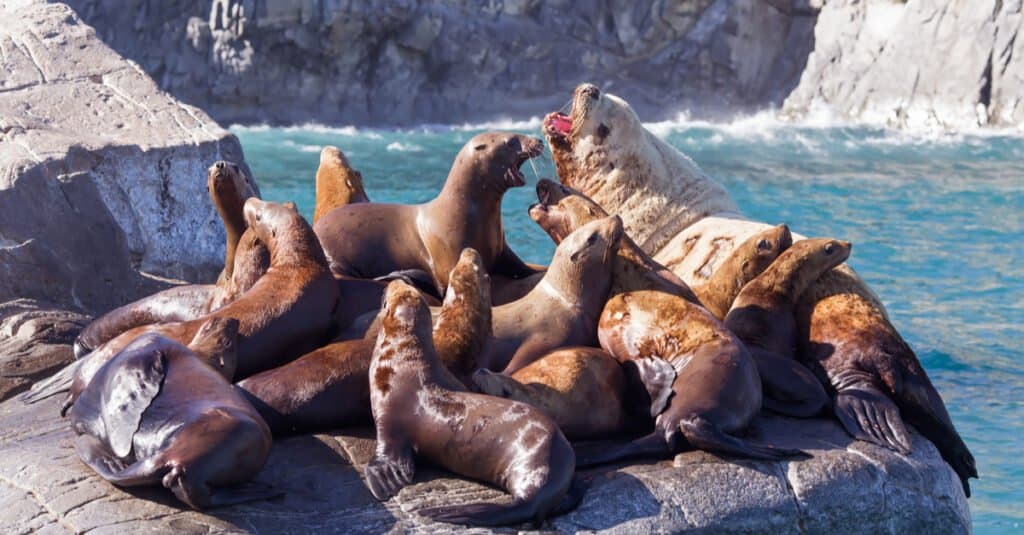
You’ll often spot groups of Steller sea lions on rocky outcroppings along the park’s coastline.
©Alexander Machulskiy/Shutterstock.com
Steller sea lions are the largest species of all eared seals and sea lions. Males can grow up to a whopping 2,500 pounds, and females up to 800 pounds. Steller sea lions are also lighter in color, helping to distinguish them from other sea lions and seals. They mate on land in rookery sites and return to the same spot year after year. Steller sea lions have a distinctive roar, another easy way to distinguish them from California sea lions on the park’s shoreline.
Gray Whale (Eschrichtius robustus)
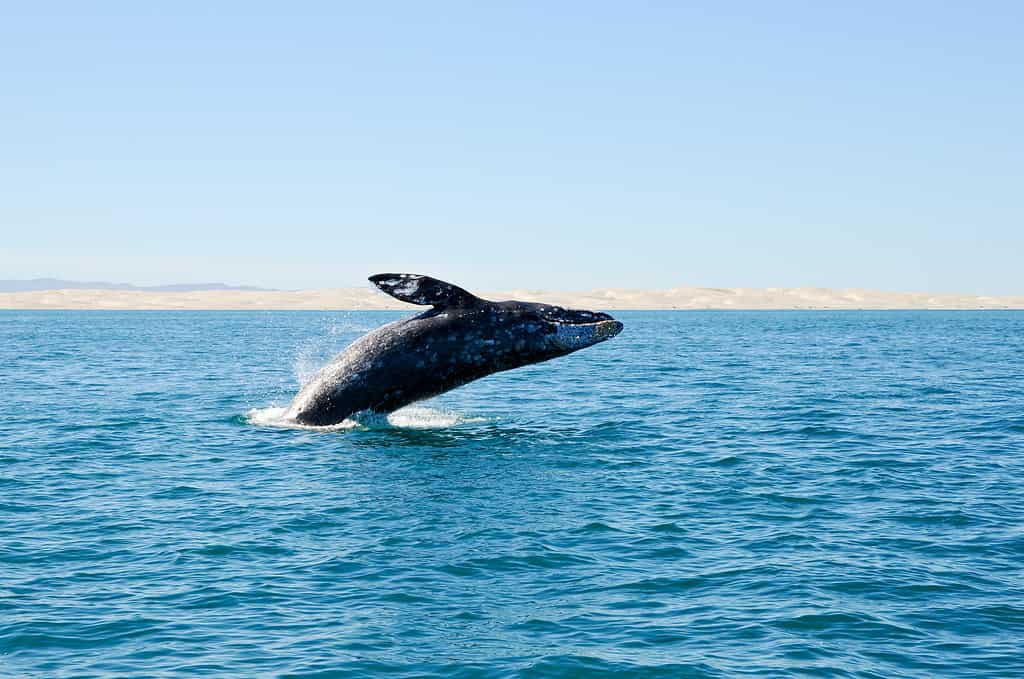
Gray whales often have organisms attached to their snouts and backs, giving them a crusty appearance.
©Jan-Dirk Hansen/Shutterstock.com
Keep an eye on the horizon and you’ll often see breaching gray whales. Distinguishable by the knuckle-like bumps running along their backs in place of a dorsal fin, gray whales migrate along the park’s coastline two times each year. Peak numbers can be seen in December as they head south toward Mexico and again in May as they head north to the cold arctic waters. When they’re not breaching, you often see them popping their heads out of the water vertically to take in the sights.
Humpback Whale (Megaptera novaeangliae)
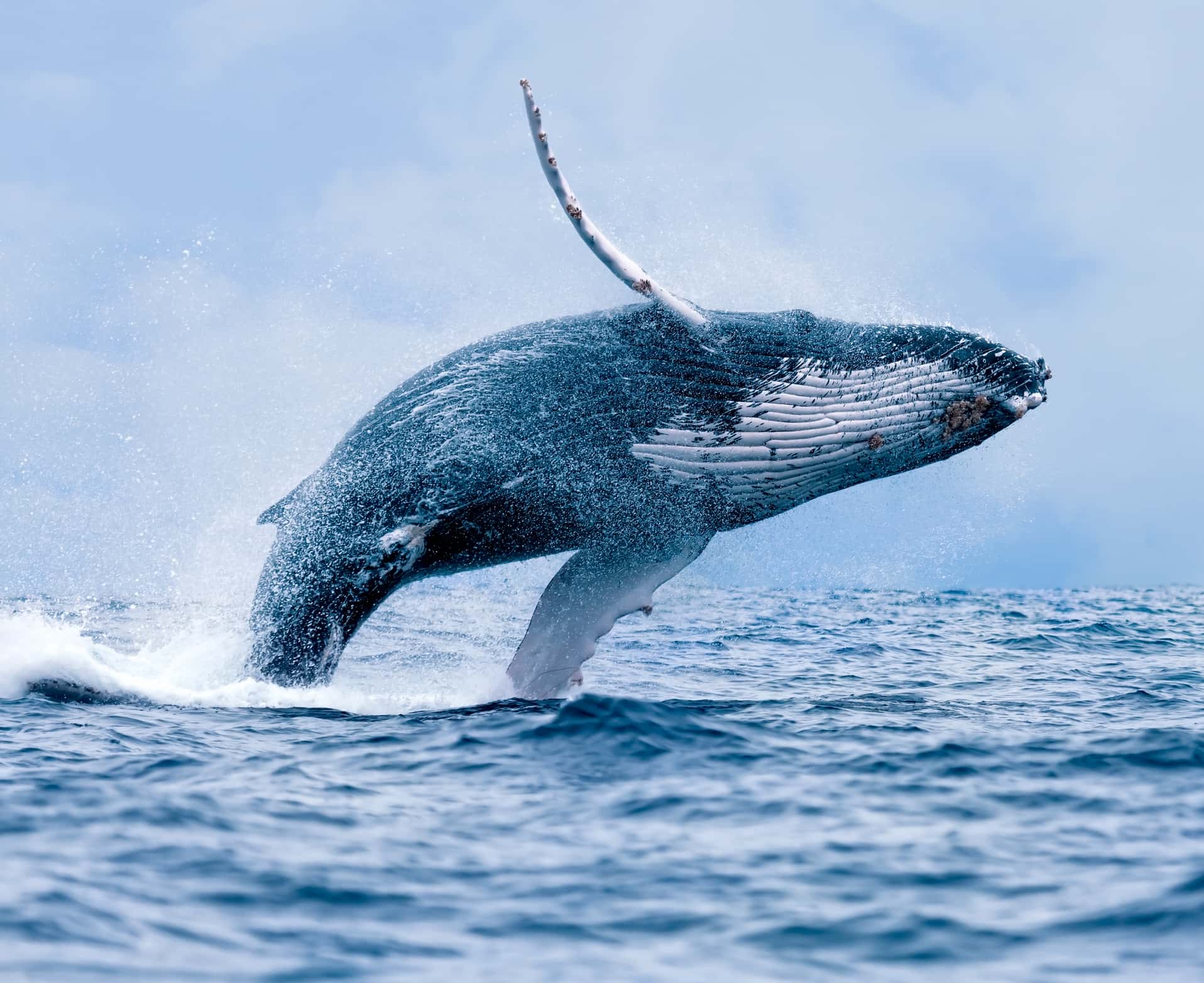
Humpback whales are notable for their extra-long flippers and ability to fully breach out of the water.
©PaulWolf/iStock via Getty Images
Humpback whales are most often spotted in the park’s offshore waters in August, September, and October, with the majority of sightings in September. The main characteristic that distinguishes humpbacks is their extra-long flippers and the distinctive hump below the dorsal fin. Humpbacks can grow up to 52 feet long, making them one of the largest whales to be seen along the coastline. You’ll often see them barrel-rolling and breaching fully out of the water.
Killer Whale (Orcinus orca)

Killer whales travel in family pods and are unmistakable due to their colors.
©Tory Kallman/Shutterstock.com
Killer whales, commonly called orcas, may be spotted any time of the year, but are most often seen when their favorite meal, Chinook salmon, migrates to the Klamath River in August and September. Orcas travel in pods, and you’ll see them gathering at the mouth of the river, waiting for their meals to come to them. Despite the word “whale” in their name, orcas are actually the largest member of the dolphin family. Their distinctive black and white markings made them easy to identify.
Tidepool Invertebrates
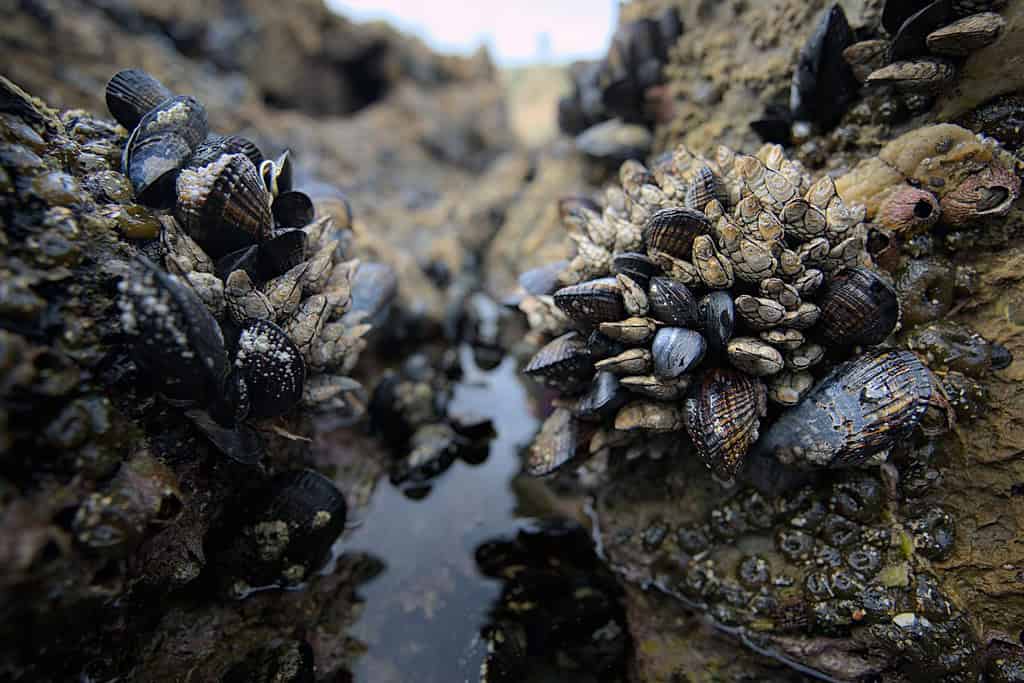
The park’s tide pools are home to countless invertebrates and make for great exploring spots.
©Cavan-Images/Shutterstock.com
The park offers several excellent locations, including Enderts Beach, Damnation Creek, and False Klamath Cove, for intrepid adventurers to explore tidal pools teeming with life. You’ll find a variety of mussels, anemones, limpets, sea cucumbers, crabs, and snails. But the biggest draw for many is the sea stars that inhabit the tidal zones along the 37 miles of park shoreline. When exploring the park’s tide pools, keep an eye on changing water levels and only explore at the lowest tide.
Birds

California brown pelicans are just one of many birds you can find in Redwood National and State Park.
©Dogora Sun/Shutterstock.com
Birds abound in the park. The coniferous forests are home to jays, woodpeckers, grouse, and owls. In the sprawling prairies and grasslands, you’re likely to see red-tailed hawks, white-tailed kites, and bluebirds. Shorelines provide an excellent habitat for spotted sandpipers, mergansers, and ravens. Ducks, herons, and egrets can be spotted in ponds and wetlands. The park’s rugged cliffs are where you’ll spot cormorants, pigeon guillemots, brown pelicans, and even the federally endangered condor.
The post These are the Most Commonly Spotted Animals at Redwood National Park appeared first on A-Z Animals.
October 18, 2025 at 06:02PMLiz Wegerer
.jpeg)
.jpeg)

0 Comments